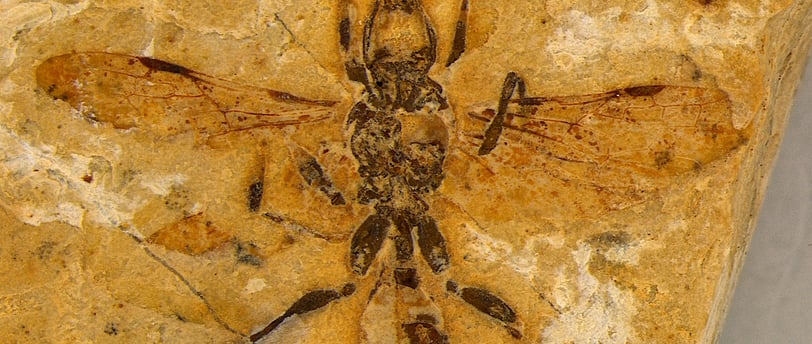Fossil of the World's Oldest Ant Discovered in Brazil
Researchers have identified the fossil of the world’s oldest known ant in Brazil, dated at 113 million years. This discovery is crucial for understanding ant evolution and highlights Brazil’s importance in global paleontology.
Team Spark News
4/27/20253 min read


Historic Discovery of the Oldest Known Ant
An international team of paleontologists has announced the discovery of the oldest known ant fossil, found in Brazil in the Crato Formation region, in the state of Ceará. The specimen, remarkably preserved in limestone, is 113 million years old, dating back to the Cretaceous period.
The newly identified species was named †Desyopone hereon and represents one of the earliest evolutionary steps of modern ants. This discovery sheds light on how these social insects—now found worldwide—first emerged and diversified over time.
Characteristics of the Fossil and Species
The †Desyopone hereon fossil is exceptionally well preserved, allowing scientists to conduct detailed analyses using micro-CT scanning techniques. Key features observed include:
A robust, flattened body
Large, well-developed mandibles
Jointed antennae typical of ants
Indications of primitive social organization
These characteristics show that †Desyopone hereon already exhibited traits distinguishing ants from other insects, such as wasps, to which they are evolutionarily related.
According to Dr. Brendon Boudinot, a researcher at Justus Liebig University Giessen in Germany and co-author of the study, “this fossil preserves a very primitive stage in ant evolution, before their incredible diversification into various ecosystems.”
The Crato Formation: A Paleontological Treasure
The Crato Formation, where the fossil was found, is internationally recognized for its impressive fossil record, with specimens of fish, plants, insects, and reptiles dating back to the Early Cretaceous.
The region’s unique geological conditions—especially fine sediments and low oxygen levels—allowed rare preservation of anatomical details, such as soft tissues and delicate structures.
In addition to the new ant species, the Crato Formation has yielded significant fossils of dragonflies, shrimp, pterosaurs, and primitive plants, making it one of the most important windows into Earth’s prehistoric life.
Evolutionary Importance of the Discovery
Until now, the oldest known ant fossils dated to about 100 million years and were mostly found in Myanmar amber. The discovery of †Desyopone hereon pushes this timeline back by around 13 million years and provides direct evidence of early ant morphology.
The fossil supports the hypothesis that:
Ants evolved from wasp-like predatory ancestors
The complex social lives of modern ants had more primitive origins
Early ants were likely solitary predators before becoming social
Dr. Ricardo Pérez-de la Fuente, paleontologist at the University of Oxford's Natural History Museum, emphasized, “Finding such an ancient and well-preserved ant is a unique opportunity to understand the roots of one of the most successful animal groups on the planet.”
Brazil as a Cradle of Great Discoveries
With its vast geological and paleontological diversity, Brazil has become a key country for understanding the history of life on Earth. Discoveries like †Desyopone hereon reinforce the need to invest in fossil site protection and in supporting national scientific research.
The fossil was discovered through collaboration between Brazilian researchers and scientists from Germany and Spain, showcasing the value of international partnerships in advancing science.
Moreover, the find highlights the importance of preserving Brazil’s paleontological heritage, which is often threatened by illegal mining and fossil trafficking.
Future Research Plans
The study of †Desyopone hereon is still in its early stages. Researchers plan to conduct further comparisons with fossilized ants preserved in amber and with modern species, using artificial intelligence to model the evolution of anatomical traits.
New excavations in the Crato Formation are also planned, aiming to find more specimens that could expand knowledge about the ecology of prehistoric ants and their early environments.
This discovery may also drive new theories on how the rise of flowering plants (angiosperms) during the Cretaceous influenced the evolution and ecological success of ants.
Conclusion
The discovery of the world’s oldest known ant in Brazil is a historic milestone for paleontology and evolutionary biology. The †Desyopone hereon fossil offers a fascinating glimpse into the origins of one of Earth’s most dominant animal lineages.
This finding reinforces Brazil as a true scientific treasure trove and underlines the importance of preserving and continuously studying its rich fossil heritage.
Source: eurekalert.org
Read More...
Image credit to Current Biology
News
Stay up to date with the latest technological news, Science, Internet, Social Networks and Smartphones.
© 2025. All rights reserved.
